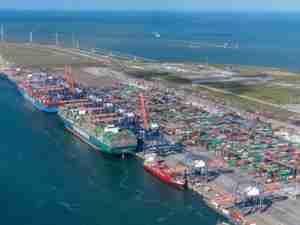In 2012, The Port of Virginia handled 2,105, 887 TEUs, which is the second best year in port history. Only 22,479 TEUS separated 2012 from 2007, which is the port’s best year on record in terms of TEUs. Virginia showed growth in the each of the final 11 months of 2012. In addition to TEU growth, the port posted increases in six other categories it uses to measure cargo moving across the state-owned terminals. They are:
• Containers: 1,209,822, up 9.8%
• General Cargo Tonnage: 17,513,093, up 12.1%
• Total Rail Containers: 385,804, up 16.8 %
• Barge Containers: 8,009, up 82.5%
• Ship Calls: 1,963, up 7.4%
• Vehicle Units: 40,031, up 28.5%
“This is not the type of thing we’ll get an award for, but it shows that our effort to market the deepest shipping channels on the East Coast, an expanding rail network, the modern container terminals that we own and operate and a commitment to customer service and continual improvement is drawing attention – business -- to Virginia,” said Rodney W. Oliver, the VPA’s
interim executive director. “We’re proud to be able to say that this port is the fastest growing on the East Coast, but now the effort is to build upon that growth.”
Oliver pointed to several items that combined to drive the port’s growth in 2012:
• The start of CSX’s on-dock rail operation at APM Terminals in Portsmouth.
• MOL’s “first-in” vessel call from Asia.
• CKYH shipping alliance’s decision to upgrade its all-water services that operate between Asia and the US East Coast that resulted in a “last-out” call for Virginia.
• The decision by MSC to shuffle the port rotation of its Golden Gate Service, which resulted in a double call for Virginia, including a “last-out.”
• The development of double-stack rail service to Greensboro, NC, that helped to expand presence in that market.
“We also set a mark last year that was worthy of noting when we sailed a containership from the harbor so heavy with export boxes that it needed 48.5 feet of water,” Oliver said. “This will likely be the standard in the very near future.”










